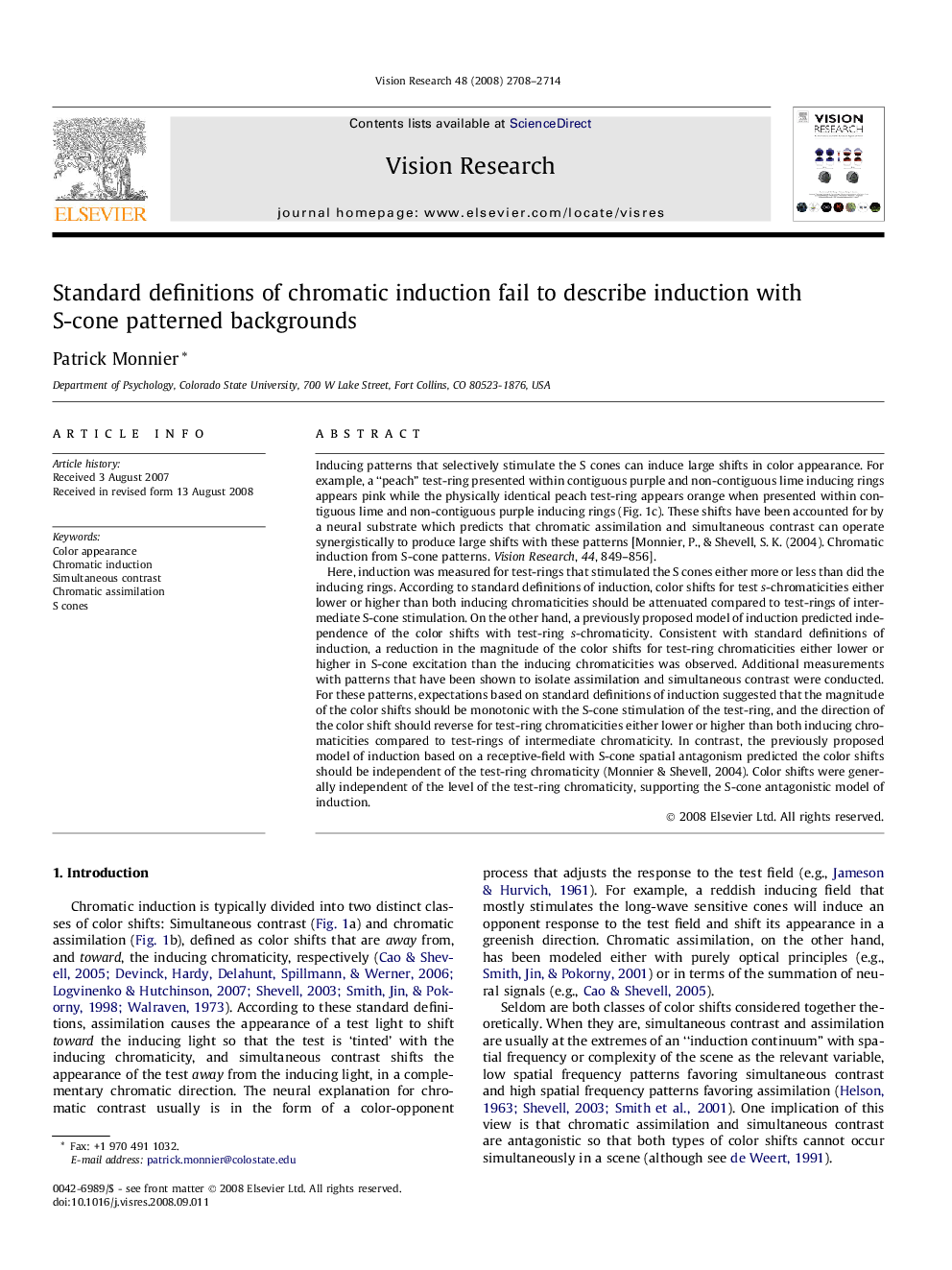| Article ID | Journal | Published Year | Pages | File Type |
|---|---|---|---|---|
| 4035045 | Vision Research | 2008 | 7 Pages |
Inducing patterns that selectively stimulate the S cones can induce large shifts in color appearance. For example, a “peach” test-ring presented within contiguous purple and non-contiguous lime inducing rings appears pink while the physically identical peach test-ring appears orange when presented within contiguous lime and non-contiguous purple inducing rings (Fig. 1c). These shifts have been accounted for by a neural substrate which predicts that chromatic assimilation and simultaneous contrast can operate synergistically to produce large shifts with these patterns [Monnier, P., & Shevell, S. K. (2004). Chromatic induction from S-cone patterns. Vision Research, 44, 849–856].Here, induction was measured for test-rings that stimulated the S cones either more or less than did the inducing rings. According to standard definitions of induction, color shifts for test s-chromaticities either lower or higher than both inducing chromaticities should be attenuated compared to test-rings of intermediate S-cone stimulation. On the other hand, a previously proposed model of induction predicted independence of the color shifts with test-ring s-chromaticity. Consistent with standard definitions of induction, a reduction in the magnitude of the color shifts for test-ring chromaticities either lower or higher in S-cone excitation than the inducing chromaticities was observed. Additional measurements with patterns that have been shown to isolate assimilation and simultaneous contrast were conducted. For these patterns, expectations based on standard definitions of induction suggested that the magnitude of the color shifts should be monotonic with the S-cone stimulation of the test-ring, and the direction of the color shift should reverse for test-ring chromaticities either lower or higher than both inducing chromaticities compared to test-rings of intermediate chromaticity. In contrast, the previously proposed model of induction based on a receptive-field with S-cone spatial antagonism predicted the color shifts should be independent of the test-ring chromaticity (Monnier & Shevell, 2004). Color shifts were generally independent of the level of the test-ring chromaticity, supporting the S-cone antagonistic model of induction.
